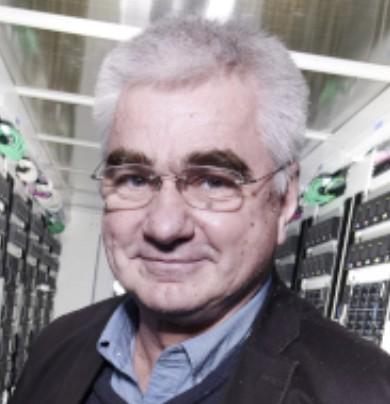It’s great to be back at CERN after a gap of 21 years. Even if the middle of a pandemic is a strange time to arrive, it’s also a time to experience first-hand the strengths of this great Organization as it adapts to the evolving situation. We all have much to take satisfaction from in the way our community is living with COVID-19.
In this, my first message in the Bulletin, I’d like to take a look at what the Research and Computing sector (RCS) has in store for the coming five years. In short, the task ahead of us is no less than to implement recommendations of the 2020 update of the European Strategy for Particle Physics. First and foremost, that means ensuring the success of Run 3 of the LHC and, with recent results from both CERN and Fermilab showing potential cracks in the Standard Model, that is a mouth-watering prospect.
The next task in hand is to prepare for a successful transition to the high-luminosity phase, the HL-LHC, starting in 2027. Whatever emerges from Run 3, the HL-LHC is a vital successor to the LHC, bringing significantly larger amounts of data and thereby extending the potential for precision studies. Greater precision will not only bring greater clarity to the discoveries made by the LHC, it will also come with new discovery potential.
Although it is our flagship facility, the LHC is far from being the only show in town. At CERN, the fixed-target programme has some vibrant years ahead of it, full of potential, and with intriguing results promised across the board. The experimental results that are emerging are giving our Theory department plenty of food for thought, and with the Neutrino Platform in full swing, we have important contributions to make to neutrino programmes in the US and Japan.
Perhaps the most significant recommendation of the updated Strategy is that CERN should conduct a feasibility study for a 100 km collider, with an electron–positron Higgs and electroweak factory as the Laboratory’s next major facility, followed by a hadron collider at the highest possible energy. Although the timescales for such facilities are long – the earliest possible start date for the Higgs factory is around 2040, while the hadron collider would not be producing physics results until 2060 at the earliest – there’s not a moment to lose. The Future Circular Collider (FCC) Feasibility Study is tasked with providing input for the next update of the Strategy in around five to six years’ time.
Computing is the third key ingredient of the RCS portfolio, and there are significant challenges ahead to keep pace with the increasing data volumes from the LHC. A new computing centre in Prévessin will go a long way towards addressing those challenges, and will be a flagship for CERN’s environmental credentials, since it will have heat recovery built in from the start. Looking further ahead, CERN is joining the global effort to bring about a new quantum revolution. Through the Quantum Technology Initiative, we will be exploring potential new computing, communication, sensing and simulation devices. We will also be pursuing our efforts on commercial software products and their licensing policies in order to ensure the best value and quality we can achieve.
Last but not least, the Scientific Information Service is, in a way, the embodiment of all we do, since the product of science is knowledge. We’ll be refurbishing the library, expanding the functionality of INSPIRE, and driving forward CERN’s open science and data preservation frameworks.
All in all, it’s an invigorating prospect, and as vaccines appear to be offering a way for us to emerge from the pandemic, I’m looking forward to rediscovering, with you, the vibrant CERN I knew so well 21 years ago.

